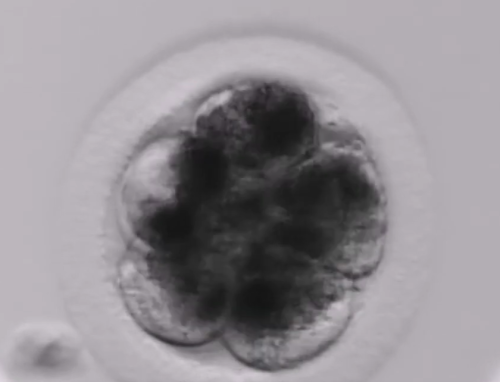Equine In Vitro Embryo Production: Making Horses in a Lab
Embryo collection by embryo flushing after breeding has been available in horses for decades. More recently, the ability to produce embryos in a laboratory (in vitro) has expanded and refined equine embryo production, greatly benefitting the equine industry. This technique has gained widespread adoption due to its growing potential and economic advantages. Beyond its role in fertility management, there are significant applications in breeding, genetic preservation, and research.
From Eggs to Embryos
Immature eggs (i.e. eggs that are not fully developed and not ready for fertilization) are collected from mares by ultrasound-guided transvaginal aspiration (TVA) and allowed to mature in the laboratory. Fertilization is performed by intracytoplasmic sperm injection (ICSI) in which a single sperm is injected into a mature egg under a microscope. The fertilized egg is cultured for approximately 7 days until it develops into a transferable-stage embryo (blastocyst). From start to finish, this process is known as in vitro embryo production (IVEP).
About 66% of the collected eggs will mature to the point where they can be fertilized. After fertilization, approximately 30% develop into embryos within 7-9 days. Each IVEP session produces 1 - 2 embryos (Malin et al., 2024).
Embryos can be transferred into a recipient mare, or back into the donor mare. They can also be frozen and stored, or frozen and shipped to another location. The overall process takes 9 – 11 days (see figure).

Embryo Biopsy and Genetic Testing
One of the advantages of producing embryos in the laboratory is that genetic testing can be performed to select which embryos to implant to maximize success and optimize breeding goals.
Pre-implantation genetic diagnosis screens embryos through genetic testing prior to embryo transfer. This facilitates selection of embryos that have the desired sex, coat color variants, or that are free of known genetic diseases.
Genetic screening can also be used to evaluate embryos for errors such as duplicated or deleted chromosomes, or parts of chromosomes, which are responsible for early pregnancy loss in 22% of cases (De Coster et al. 2024).
To obtain material for genetic testing, a biopsy is taken from the outer layer of the embryo before it is frozen. This yields 5-10 cells from which genetic material can be extracted. Biopsied embryos result in normal pregnancy rates and foals born from biopsied embryos are normal (Hinrichs and Choi, 2012).
The UC Davis Veterinary Genetics Laboratory offers genetic testing on horse embryo biopsies.
Freezing Horse Embryos
Most embryos created through IVEP are frozen. Advances have enabled high pregnancy rates from IVEP frozen embryos. Freezing allows for wide geographic distribution of embryos, flexible use of recipient mares, and banking of embryos from young individuals who are in the early stages of training and competition (i.e. unproven) or older individuals with reduced reproductive fitness.
Equine embryos are preserved by ultrafast freezing (vitrification). This process exposes the embryo to high levels of cryoprotectants, compounds that protect cells from damage during freezing, for short times at a fast-freezing rate. The goal is to minimize the development of ice crystals, which can physically damage embryos.
Vitrified embryos are placed in liquid nitrogen. They can be shipped to another location or stored for later use.
Monitoring Embryonic Growth

The UC Davis Veterinary Assisted Reproduction (VetART) Laboratory is one of the few Assisted Reproductive Technology centers in the world equipped to monitor growing equine embryos in the laboratory with a non-invasive live embryo monitoring system. Traditional monitoring of embryos requires daily removal from the incubator, which can stress embryos and impede evaluation of the exact timing of specific developmental events.
Using a time-lapse incubation system, the VetART Lab can determine the normal timeline for developing equine embryos and accurately predict which embryos are likely to progress to appropriate stages without removing them from the incubator. This allows for the selection of embryos with the highest potential to result in successful pregnancies. A recent study from the VetART Lab also showed that the characteristics of embryo development could predict the chances of pregnancy loss in mares (Martin-Pelaez et al., 2024), highlighting the importance of embryo monitoring.
The Future of Embryo Production
Advances in IVEP, including the successful use of ICSI in horses, have provided reliable methods to produce foals, overcoming issues such as compromised fertility and breeding season restrictions. Research is ongoing to address challenges and improve success rates in equine reproduction with the goal of tailoring breeding strategies to improve health and performance and preserve valuable genetics.
For more information about IVEP at UC Davis, visit https://vetart.vetmed.ucdavis.edu/, or contact ICSIVET@ucdavis.edu, 530-754-3124.
